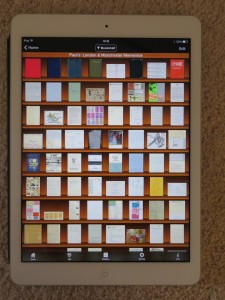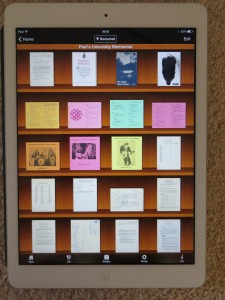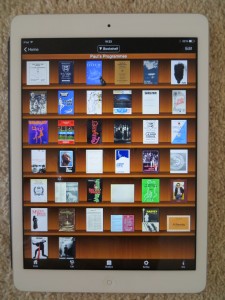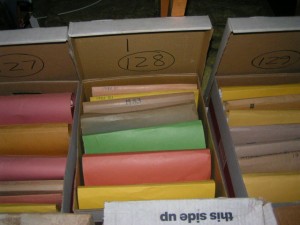I’ve just finished digitising the third tranche of my mementos – the material we have kept in separate pocket folders for each year since we got married in 1980. This was an even bigger job than the two previous tranches (one for work related materials, and the other for my own mementos from 1958 – 1979), since it involved so much material of such a diverse nature. The end result is 575 index entries, and 611 electronic files taking up 2.5Gb of storage. About 220 physical items were retained in either 40-Pocket Presentation Folders, Clear Foolscap Plastic Wallets, or a Display Cabinet.
Overall the whole exercise has taken about six weeks of at least a couple of hours work every day – often a lot more. The most time-consuming part of the exercise was the initial sorting and organisation of the material. Scanning the items was relatively quick – though some couldn’t be scanned and had to be photographed and this added time to the process. I photographed three types of items: a) all the Birthday/Anniversary/Easter cards etc. that we had kept – these were photographed as groups – first the fronts and then the insides with the writing on – rather than scanning each one individually; b) large formats such as magazines, newspaper articles and some theatre programmes that were simply too big to fit on the scanner; and c) 3D physical objects such as a winners medal.
I attempted to identify the set of index terms (facets) as I went along, but inevitably requirements for new terms identified half way through affected the allocations made earlier. I also attempted to store the physical artefacts in a coherent way as I went along, but this too is difficult to finalise until the end of the process when you can see the full extent of the amount and type of material to be dealt with. To have any hope of keeping things under control it’s necessary to decide on an initial ordering criteria, such as date, and then to leave plenty of spaces to enable additional items that are encountered later on in the exercise to be slotted in. I failed to do that sufficiently well in this exercise and consequently now have most of the material in reasonable order but also a substantial number of items stored separately which need to be interleaved with the main set.
I’ve stored all the digitised items as PDF files for three reasons: a) PDF enables you to collect up several related individual scans or photographed images so that they can be accessed as a coherent set of items; b) The SideBooks App which I am using to display the items on my iPad, will only accept PDFs, ZIP, CBZ, RAR and CBR formats; c) There seems to be some consensus that PDFs are a good ‘data preservation’ format for enabling files to be read in the long term.
As with my work and pre-marriage mementos, I’ve loaded this new set into the SideBooks App on my iPad. I continue to be impressed at how easy that process is – just a matter of copying the files you want to move and pasting them into Dropbox. I tended to copy over groups of ten or twenty files at a time which take only a few seconds each to load into Dropbox. After that, the Dropbox page in Sidebooks can be opened and a tap on the file concerned starts the downloading process. A few seconds later it’s all done, and the first page of the PDF file is displayed as a thumbnail. I feel it is a startlingly effective way of bringing material to life that has been trapped in files and boxes. Since this set of items is as much my wife’s as mine, she too has the set of items in SideBooks on her iPad, so it will be very interesting to see if she feels the same way after she’s used it for a while.







